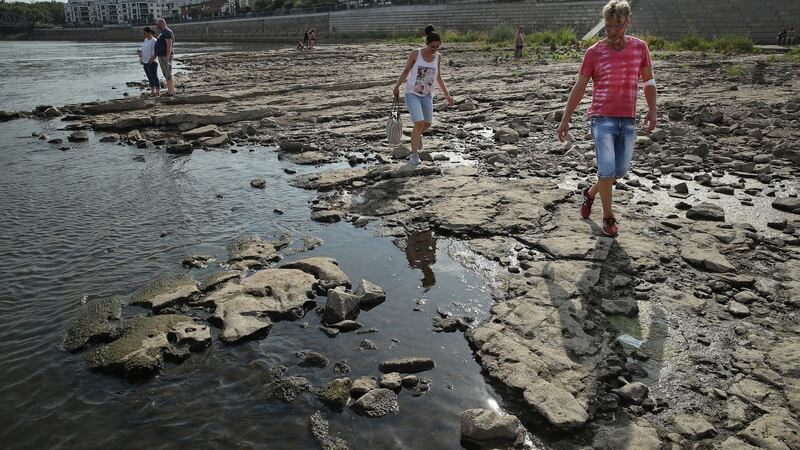When German astronaut Alexander Gerst looks down on his homeland, and central Europe, he doesn't like what he sees.
“A shocking sight,” he tweeted from the International Space Station (ISS) this week. “Everything dried and brown that should be green... I’ve never seen it like this before.”
The pictures he took of the Rhine, Bonn, Cologne and Düsseldorf speak volumes about the extraordinary heatwave and drought that has gripped large swathes of the European continent in effect since May.

Just had a chance to take my first photos of dried-out Central Europe and Germany since a few weeks, and was shocked. What should have been green, is now all brown. Never seen it like this before. #Horizons pic.twitter.com/o2XoddPdrM
— Alexander Gerst (@Astro_Alex) August 6, 2018
Portugal, he said, looked like "a mixture of dust, sand and smoke", as firefighters battle wildfires in the Algarve amid temperatures of 48 degrees, not far off those of California's notorious Death Valley.
In France, where temperatures tipped 40 degrees this week, meteorologists are talking about one of the three hottest summers on record. Four nuclear plants have been powered down due to the extreme weather.
Up north in Sweden, the hottest July in 250 years saw the glacier-topped southern peak of Kebnekaise, the country's highest mountain, lose its crown as Sweden's highest point. The worst forest fires in living memory there, inside the Arctic Circle and across to the Baltic, have seen the value of forest lost estimated at 700 million kronor (€70 million).
Canine shoes
While motorway asphalt melts across the continent, some Viennese dog owners have kitted out their canines with special shoes to spare their feet on the sun-baked pavements.
Across Europe, farmers are at their wits’ end with crops that have struggled to grow since the last substantial rain in May – or have simply withered in the fields. Venture into Germany’s empty expanses of Westphalia or Mecklenburg and the corn, usually by now as high as an elephant’s eye, is struggling to reach an elephant’s knee.

Looking more like cacti than corn, rye crop yields are down about 46 per cent while wheat is down 47 per cent in Germany. Rapeseed and barley are down 26 and 28 per cent on last year respectively, and this after a bad 2017, when heavy rain made it impossible to plant before the frost.

With food prices set to soar as a result – wheat commodity futures are at a three-year high – poor grazing means farmers across the continent have pulled out their winter stocks already. Straw prices have already tripled in some European countries, with prices likely to soar further in the coming months.
Even those not affected by the weather will see the knock-on effects in their shopping trollies. The European Association of Fruit and Vegetable Processors has warned of shortages ahead as their members struggle with extreme conditions not seen in the last 40 years in France, Belgium, the Netherlands, Germany, the UK, Hungary and Poland.
Hailstorms
The heat isn't on in all of Europe this summer: from Iberia through southern Italy to the Balkans and Turkey there has been twice the average rainfall from May to July, accompanied by thunderstorms and flash flooding.
Hailstorms ravaged parts of the Bordeaux and Cognac wine regions in May, destroying thousands of hectares of vines. Across the border in Germany, meanwhile, vintners have started their harvest three weeks early in expectation of a bumper grape crop.
And to complete the extremes, this week ended with tornado-force winds of up to 145km/h across Germany and torrential rain across the continent. Torrential rain caused flash floods in southern France, forcing the evacuation of some 1,600 people from a campsite with at least two people missing.
More droughts
So is this just another hot summer or a sign of things to come? No serious climate researcher will make predictions based on a summer that has yet to end, but across the continent are indications that this year is a taste of what’s to come with Earth’s average temperatures set to rise two degrees or more. That means more droughts, more heatwaves and heavy rainfall – even in milder European latitudes.
For now, the hot weather and drought is likely to continue into September and even October, according to the European Centre for Medium-Range Weather Forecasts in Reading.
Not that everyone is complaining. Germany’s ice-cream manufacturers are having a bumper year, with people here to down almost eight litres of ice-cream per head this year, the highest in a decade.











